Self-Guided Learning Area Info
Ski Self-Guided Learning Info
Review TRAIL MAP and MOUNTAIN SAFETY information.
BY USING MT. BAKER SKI AREA and FACILITIES, I ACCEPT THE RESPONSIBILITY TO:
- BE AWARE OF MY ENVIRONMENT and location.
- EDUCATE MYSELF regarding the mountain environment, including but not limited to the risks, hazards, and dangers of the mountain environment, mountain activities, and My Activities.
- EDUCATE MYSELF ABOUT, AND ADHERE TO, Mt. Baker Ski Area, Inc. policies and guidelines, Mountain Policies, Your Responsibility Code, and applicable laws, regulations, and codes, including but not limited to RCW 79A.45.020, 79A.45.030, 79A.45.040, 79A.45.050, and 79A.45.070; information available at www.mtbaker.us, on the trail map, and/or at the ski area.
- Use GOOD JUDGMENT, BE SAFETY CONSCIOUS, and USE COMMON SENSE at all times.
- ACTIVELY ASSESS AND MINIMIZE RISKS and hazards at all times.
- BE AWARE OF MY ACTIONS and how they affect myself and others.
- ACT RESPONSIBLY for my safety and the safety of others.
Winter sports involve risk of serious injury or death. Your knowledge, decisions and actions contribute to your safety and that of others.
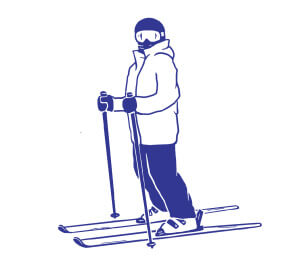
• Feet Shoulder Width Apart
• Flex Ankles & Knees
• Hips Slightly Forward
• Eyes & Elbows Forward
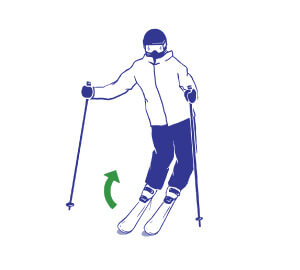
• Tip Ankle And Knee Side To Side
• Keep Hips And Upper Body Over Skis
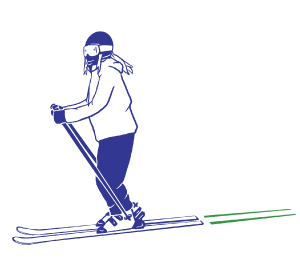
• Balance Over Middle Of Ski
• Maintain Athletic Stance
• Look Where You Want To Go
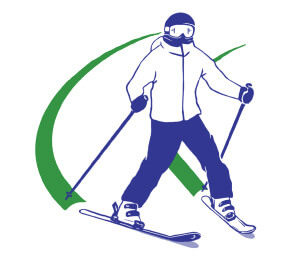
• Glide With Skis In Small Wedge (Triangle Shape – Tips Together, Tails Apart)
• Turn: Turning Your Feet And Legs & Looking Where You Want To Go.
• Stop: Increasing The Size Of The Wedge Or Turning Across The Hill.
Snowboard Self-Guided Learning Info
Review TRAIL MAP and MOUNTAIN SAFETY information.
BY USING MT. BAKER SKI AREA and FACILITIES, I ACCEPT THE RESPONSIBILITY TO:
- BE AWARE OF MY ENVIRONMENT and location.
- EDUCATE MYSELF regarding the mountain environment, including but not limited to the risks, hazards, and dangers of the mountain environment, mountain activities, and My Activities.
- EDUCATE MYSELF ABOUT, AND ADHERE TO, Mt. Baker Ski Area, Inc. policies and guidelines, Mountain Policies, Your Responsibility Code, and applicable laws, regulations, and codes, including but not limited to RCW 79A.45.020, 79A.45.030, 79A.45.040, 79A.45.050, and 79A.45.070; information available at www.mtbaker.us, on the trail map, and/or at the ski area.
- Use GOOD JUDGMENT, BE SAFETY CONSCIOUS, and USE COMMON SENSE at all times.
- ACTIVELY ASSESS AND MINIMIZE RISKS and hazards at all times.
- BE AWARE OF MY ACTIONS and how they affect myself and others.
- ACT RESPONSIBLY for my safety and the safety of others.
Winter sports involve risk of serious injury or death. Your knowledge, decisions and actions contribute to your safety and that of others.
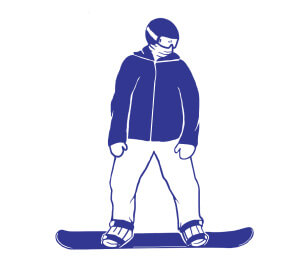
• Knees & Ankles Flexed
• Shoulders & Hips Stacked Over Board
• Shoulders In Line With Board
• Eyes Forward
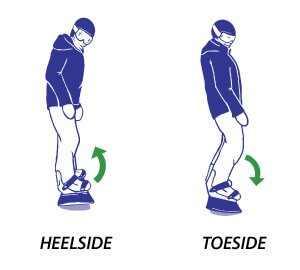
HEELSIDE: Curl Toes Up Into Boots While Keeping Knees Flexed To Tip Board Onto Heelside Edge.
TOESIDE: Move Knees Over Toes By Flexing At The Ankles To Tip Board Onto Toeside Edge.
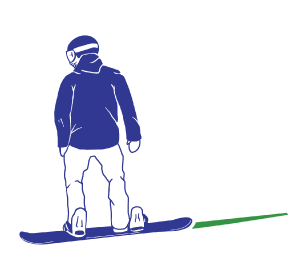
• Knees & Ankles Flexed
• Shoulders & Hips Stacked Over Board
• Shoulders In Line With Board
• Eyes Forward
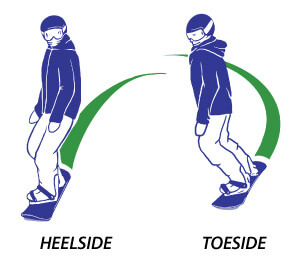
• While Gliding, Shift Weight Over Front Foot
• Turn: Tip The Board Gradually Onto The Edge You Want To Turn Towards
• Stop: Turning Across The Hill
HOW TO PREPARE FOR YOUR DAY ON THE MOUNTAIN
Skiing and snowboarding are active sports. Make sure to eat a good breakfast and follow it up with a hearty lunch and snacks to ensure that you have fuel for the entire day. Breakfast, lunch and snacks are available for purchase at the Heather Meadows and White Salmon day lodges. You are welcome to bring your own sack lunch, but please consume it in the designated areas. Make sure to get adequate sleep the night before. You’ll have more fun if you’re well-rested! Remember to drink water throughout the day. It can be easy to forget to stay hydrated in the winter weather. Dehydration can have serious effects on your ability to perform physically.
Even before your day on the mountain, familiarize yourself with the Mt. Baker Trail Map. This handy map folds up to fit into your pocket for easy access and contains a wealth of helpful information. The trail map shows the named ski and snowboard trails and their difficulty rating. Green circle trails are the easiest, blue squares are more difficult, black diamonds are most difficult and double black diamonds are experts only. The trail map also shows the ski area boundaries, extreme danger zones and slow zones. You will find points of interest such as the day lodges, first aid, restrooms, ticket office, rental shop and others. Additionally, the trail map is where you can find Mt. Baker’s Mountain Policies and Guidelines which provide policies, risks, responsibilities and more safety information. For example, sledding and tubing is prohibited within the Mt. Baker Ski Area Boundaries. Outside of the ski area is Mt. Baker Snoqualmie National Forest land where snow play is at your own risk.
Base Layer & Socks
Synthetic, wool and wool blend base layers and socks will help you retain heat in the cold. AVOID cotton. Cotton actually can pull heat away from you, especially when wet. This can make you even colder. Wearing a SINGLE pair of over the calf synthetic or wool socks will help keep your feet warm and be most comfortable in ski and snowboard boots.
Mid Layers
Bring a fleece, down or wool layer to wear over your base layer and under your waterproof shell. Sometimes people choose multiple mid layers to adjust as conditions change. If you get too warm you can always take them off, and if too cold, you can add additional layers.
Outer Layer
Waterproof jackets and pants are extremely important in the northwest. The conditions at Mt. Baker can be variable and staying dry is key to having fun in a mountain environment.
Helmet/Hat
Helmets are an effective choice for helping to keep your head warm, dry and protected. Make sure to look for one that is designed for winter sports. If you choose to wear a hat, under your helmet or on its own, it’s best if it is made of synthetic material or wool.
Gloves
Waterproof gloves are just as important as your waterproof outerwear layer. If your hands tend to get cold, waterproof mittens are a warmer choice than gloves. Having an extra pair with you on snowy or wet days is useful.
Neck Gaiters
Neck gaiters keep the cold wind from your face and neck. A simple neck gaiter goes a long way to help keep you warm on windy and snowy days. We especially recommend them for kids.
Goggles & Sunglasses
Snow goggles shield your eyes from the wind and snow elements. It is very difficult (and not much fun) to try to see on a snowy day without goggles. The sun (when it shines on occasion here at Mt. Baker) reflects off the snow and is hard on your eyes. Sunglasses are very important in the mountain environment.
Extras
It is a good idea to bring extra layers and outerwear, including extra hats, gloves and goggles. That way if anything gets wet or cold, you can change into a dry set. It’s also a good idea to have an extra set of clothes to change into after your day on the mountain to make the ride home more comfortable.
Ski Patrol
If you need assistance, call our Ski Patrol Dispatch at 360-300-7070 or go to either of the top ski patrol stations located at the top of Chair 8 and Chair 1 or one of our two Aid Room – one at White Salmon Base area and one is at Heather Meadows Base Area (see trail map for locations). You can also contact any staff member and they can help you get a hold of someone who can help you.